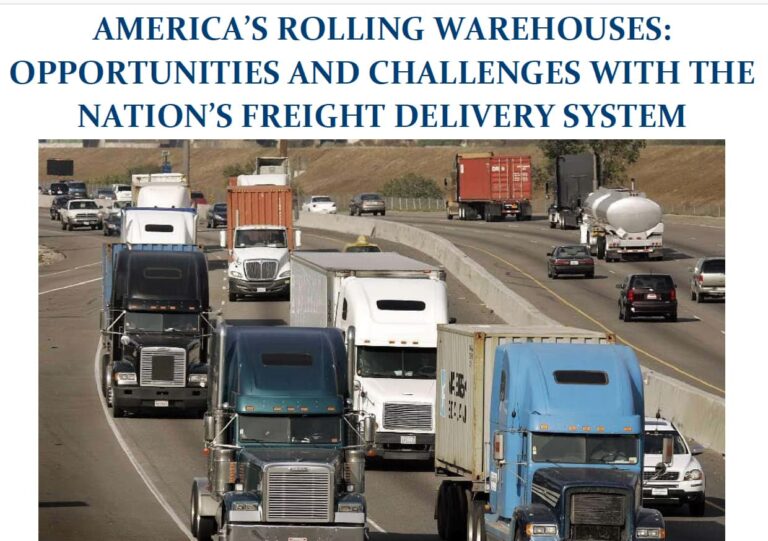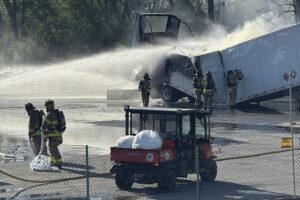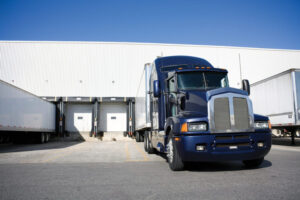WASHINGTON — TRIP, a national transportation research nonprofit, has released a new report the gist of which should surprise no one and which sounds like the 100th verse of a song sung by Americans and led by a choir of thousands of those associated with the freight transportation industry.
“The ability of the nation’s freight transportation system to efficiently and safely accommodate the growing demand for freight movement could be hampered by inadequate transportation capacity, institutional barriers to enhancing the nation’s freight facilities, a lack of adequate funding for needed improvements to the freight network and a shortage of drivers. This is happening as freight movement is being transformed by advances in vehicle autonomy, manufacturing, warehousing and supply chain automation, increasing e-commerce, and the growing logistic networks being developed to accommodate consumer demand for faster delivery.”
TRIP’s report, “America’s Rolling Warehouses: Opportunities and Challenges with the Nation’s Freight Delivery System,” examines current and projected levels of freight movement in the U.S., large truck safety and trends impacting freight movement.
TRIP’s report found that freight delivery is expected to increase rapidly as a result of economic growth, increasing demand, growing international trade, changing business and retail models, and a significantly increased reliance on e-commerce by businesses and households.
Each year, the U.S. freight system moves approximately 17.7 billion tons of freight, valued at $16.8 trillion.
Trucks carried 72 percent of freight by value in 2016 and 66 percent by weight. From 2016 to 2045, freight moved annually in the U.S. by trucks is expected to increase 91 percent in value (inflation-adjusted dollars) and 44 percent by weight.
“The new TRIP report again highlights the urgent need for federal action to modernize America’s infrastructure,” said U.S. Chamber of Commerce Vice President for Transportation Infrastructure Ed Mortimer. “The future of our country’s ability to compete in a 21st century economy by providing the safe movement of commerce is at stake, and this report helps bring a spotlight to the issue.”
The TRIP report also found that 12 percent of travel on interstate highways and 21 percent of travel on rural interstate highways is by combination trucks.
“TRIP’s report makes an important contribution to a growing body of evidence that our deteriorating infrastructure is putting the brakes on our economy,” said Chris Spear, president and CEO of the American Trucking Association. “The cost of doing nothing is too high and will only get higher if our leaders do not step up and put forward a comprehensive investment package backed by real funding.”
Many states exceed the 12% of travel on interstate highways by combination trucks led by Wyoming at 29%, Arkansas at 27%, New Mexico at 23% and North Dakota and Iowa at 20%.
Arkansas has the highest percentage of combination trucks on rural interstate highways at 32% followed by New Mexico at 30%, Wyoming at 29%, and Illinois, Texas and Tennessee at 28%.
The Arkansas number is buoyed by the fact that in excess of 20,000 combination trucks travel on Interstate 40 between North Little Rock, Arkansas, and West Memphis, Arkansas every day.
The report suggests that highway congestion, which is a thorn in the side of every over-the-road professional truck driver, will worsen drastically if something is not done to improve the national infrastructure.
The report notes that the U.S. Department of Transportation forecasts that between 2012 and 2045, the miles of major U.S. highways that are congested during peak periods will quadruple from 19,200 miles to 78,500.
Most of the top 10 bottlenecks listed in the report are nothing new to trucking as they have been reported by the American Transportation Research Institute, the research arm of the American Trucking Associations:
- Fort Lee, New Jersey: I-95 at SR 4, where the average speed during peak traffic hours is 23 mph and the average speed during non-peak hours is 35.
- Atlanta: I-285 at I-85 (North), where the average speed during peak traffic hours is 23 mph and the average speed during non-peak hours is 41.
- Atlanta: I-75 at I-285 (North), where the average speed during peak traffic hours is 27 mph and the average speed during non-peak hours is 43.
- Los Angeles: SR 60 at SR 574, where the average speed during peak traffic hours is 35 mph and the average speed during non-peak hours is 43.
- Houston: I-45 at I-69/US 59, where the average speed during peak traffic hours is 24 mph and the average speed during non-peak hours is 38.
- Cincinnati: I-71 at I-75, where the average speed during peak traffic hours is 36 mph and the average speed during non-peak hours is 47.
- Chicago: I-290 at I-90/I-94, where the average speed during peak traffic hours is 18 mph and the average speed during non-peak hours is 27.
- Nashville, Tennessee: I-24/I-40 at I-440 (East), where the average speed during peak traffic hours is 28 mph and the average speed during non-peak hours is 48.
- Atlanta: I-20 at I-285 (West), where the average speed during peak traffic hours is 38 mph and the average speed during non-peak hours is 47.
- Los Angeles: I-710 at I-10, where the average speed during peak traffic hours is 27 mph and the average speed during non-peak hours is 43.
The report listed facts concerning large truck fatalities, which have risen steadily from 3,981 in
- In 62 percent of fatal large truck crashes from 2013 to 2017, the most critical pre-crash event was either another vehicle’s encroachment into a large truck’s lane (38 percent) or another vehicle entering a large truck’s lane (26 percent).
- A 2018 report by the National Highway Traffic Safety Administration (NHTSA) that analyzed 2016 two-vehicle fatal crashes involving a large truck found the following: in 43 percent of the crashes both vehicles were proceeding straight, in nine percent of the crashes the other vehicle was turning left or right regardless of the large trucks maneuver, in 10 percent of the crashes the truck and the other vehicle were negotiating curves, and in seven percent of the crashes either the truck or the other vehicle was stopped in a traffic lane (five percent and two percent, respectively).
- In large truck-involved fatal crashes in 2016, two percent of large truck drivers had blood alcohol concentrations above .08 f/dL, while the share for drivers of passenger vehicles, light trucks and motorcycles with blood alcohol concentrations above .08 f/dL was 21, 20 and 25 percent, respectively.
- Fatal large truck crashes are more likely to occur on rural roads, two-lane roads and roads with speed limits 55 miles per hour or higher.
“It’s clear that the safe and efficient movement of goods and services depends on a well-funded national transportation system,” said Jim Tymon, executive director of the American Association of State Highway and Transportation Officials. “Without strong investment from our federal partners, state departments of transportation won’t be able to meet the growing demands on the system.”
TRIP’s report concludes with a series of recommendations — many of which have been previously expressed by TRIP and other transportation stakeholders — to improve freight transportation by increasing capacity on the nation’s freight transportation system, particularly at major bottlenecks; improving the reliability and condition of intermodal connectors between major highways and rail, ports and waterways; continued development of vehicle autonomy and the further automation of warehousing; improving roadway safety and providing additional truck parking spaces to ensure adequate and timely rest for drivers; providing funding for freight transportation improvements that is substantial, continuing, multimodal, reliable, and, in most cases, specifically dedicated to freight transportation projects; and, providing a permanent, adequate and reliable funding fix to the federal Highway Trust Fund as a critical step towards funding a 21st Century freight transportation system.
“As consumers demand faster deliveries and a more responsive supply chain, the nation’s freight transportation network is facing unprecedented roadblocks in the form of increasing congestion and a lack of transportation funding to improve the nation’s transportation system,” said Will Wilkins, executive director of TRIP. “Fixing the federal Highway Trust Fund with a long-term, sustainable source of revenue that supports needed transportation investment will be crucial to improving the efficiency and safety of our freight transportation system.”
The Trucker News Staff produces engaging content for not only TheTrucker.com, but also The Trucker Newspaper, which has been serving the trucking industry for more than 30 years. With a focus on drivers, the Trucker News Staff aims to provide relevant, objective content pertaining to the trucking segment of the transportation industry. The Trucker News Staff is based in Little Rock, Arkansas.








